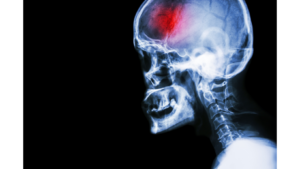Stroke is a cerebrovascular disease that is one of Australia’s leading causes of death. It can result in irreversible damage without immediate treatment.
What is a Stroke

The rupture or blockage prevents the blood and oxygen from reaching the tissues in the brain. These can cause severe damages to the cells and tissues and may begin to die within minutes.
According to the Australian Institute of Health and Welfare (AIHW), over 387,000 people (1.7% population) suffer from a stroke at some point. This disease is known as a medical emergency that requires urgent medical attention.
Although most of these attacks are treatable, severe ones can lead to disability or death.
Types of Stroke
Strokes are classified into three categories.
Transient ischemic attack (TIA)
TIA, also known as a mini-stroke, is a temporary blockage of blood flow to the brain. It usually does not cause permanent damage, but it can serve as a significant warning that a full-blown stroke may happen ahead.
Ischemic stroke
An ischemic stroke occurs when a blockage prevents the blood supply from reaching the brain. It is also known as a “blood clot.” The symptoms and complications of this type can last than those of TIA, and it may also lead to permanent damage.
About 50% of strokes are ischemic, and the remaining 50% are because of bleeding in and around the brain.
Hemorrhagic stroke
In hemorrhagic stroke, the blood vessel found in the brain breaks, flooding it with blood and causing damages within the brain cells.
It is also known as “brain hemorrhage” or “brain bleed.”
A hemorrhagic stroke usually affects older people but can also occur in children. It is potentially life-threatening and requires immediate treatment.
Stroke Symptoms
Some treatment options are most effective when performed in the first few minutes after a stroke begins. Pay particular attention to these signs and symptoms:
- Speech difficulty and trouble understanding
The person may experience confusion, use slur words, or have difficulty understanding and communicating with speech.
- Paralysis or numbness in the face, arm, or leg
The person may suddenly develop numbness or paralysis in some body parts, including the face, arm, or leg. Stroke often affects one side of the body.
Try to raise their hands over the head at the same time. One arm falling may indicate a stroke emergency. If they try to smile and the other side may appear limp, it may also be a warning sign of a stroke.
- Changes in vision
The person may have experienced problems seeing in one or both eyes. Blurry and blackened vision are warning signs of a stroke.
- Loss of balance
The person may have trouble walking and may stumble and lose their balance. They may also experience sudden dizziness and loss of coordination.
First Aid Treatment
Time is of the essence in a stroke emergency.
Follow these first aid steps if someone around is experiencing symptoms of a stroke.
- Call emergency services. Dial triple zero (000) or have another bystander do it. Remain calm as possible and stay with the casualty while waiting for an ambulance to arrive.
- Put the person in the recovery position. Make sure that the casualty is in a safe and comfortable position. It is best to lay the person on their left side, with head slightly raised and supported in case of vomiting.
- Monitor their breathing. Check to see if the person is having trouble breathing or coughing. Loosen and restrictive clothing such as ties, scarves or belts and remove the jewellery. If their breathing stops, begin to administer CPR.
- Provide reassurance. If the casualty is conscious, talk to them in a calm, reassuring manner. Use a blanket to cover and keep the person warm. Avoid giving them anything to drink or eat for the time being.
Carefully observe the casualty for any change in condition. Share important details with the emergency operator, including when the symptoms started and whether the person experience falls or got hit in the head.
Recurrent strokes
One in every four stroke victims are people who have suffered a stroke previously.
The risk of recurrent stroke is highest right after the incident and decreases over time. The likelihood of permanent disability and death increases with each attack.
Learn First Aid for Stroke Emergencies
A stroke is a true medical emergency that requires immediate treatment to minimize permanent damage.
Recognizing the symptoms and providing an adequate first aid response can make a huge difference, literally saving lives. It also significantly improves the chances of recovery without any long-term disability.
With an increasing prevalence of stroke, it is crucial that everyone knows and is up to date with the first aid guidelines.
